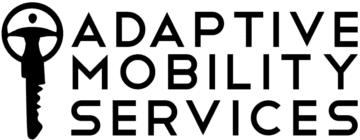
OTs Who Address Driving Change Lives!
Hey, there fellow OT Superheros! I am excited to connect with you. Did you realize that OTs who address driving change lives?
It’s true! But you don’t have to take my word for it… check this out:
When OTs address driving we give more than feedback on readiness for an IADL, we give hope. We help clients and patients know that there is life beyond their stroke. That after they learn to bathe and feed and dress there is more! When we talk about driving, we change the trajectory of recovery. We give motivation by identifying a long-term goal that is both important and valuable.
Just think about it. If you suffered a stroke or were diagnosed with multiple sclerosis or lost a limb, what would you want to focus on? What would help you to feel whole again? Sure, the basic stuff is important and the foundation for everything else, but the big picture items are what keep you going. Having big goals, big dreams, big aspirations are what help you push through the pain and sadness on those tough days.
As OTs, driving and community mobility is not only part of our OT Practice Framework, but as practitioners who love occupation, it’s one of the most valued activities out there. It’s time we all stand up and help to address driving risk.
Now, don’t get me wrong. I’m not encouraging you to go jump in a car with your patient. That requires the skills, equipment, and liability coverage of an OT Driver Rehab Specialist (OT DRS). BUT I am encouraging you to start the conversation about driving. As an OT you can address driving risk and help get your patient to the OT DRS when they are ready.
Here are some tips to help support you change your patient’s life by addressing Driving Risk in your practice:
- Ask about driving. Is your patient a driver? Do they plan to return to driving?
- Is your patient experiencing a change that could make driving unsafe? If yes, let your patients know if they should hold off on driving while they get better.
- Do everything you can to help your patients recover so they are more ready for driving.
- Find local resources so your patients can get around without driving while they get better.
- Share your concern and suggestions with the patient and medical team. Make sure you engage the doctors.
- Find your local OT DRS through AOTA & ADED directories
- Refer your patients to the OT DRS when they are ready to think about driving again.
OTs Who Address Driving Change Lives!
Learn more about Starting Your Own OT Driving Risk Assessment.
Please remember, being in a moving vehicle requires the advanced skills, training, equipment, & liability coverage of an OT-DRS.
Ready to become an OT-DRS? The driving risk assessment training is your first step. Learn more on the 3 part process to become an OT-DRS.
Thinking about your own private practice? Read how starting her own private practice saved Susie’s love for OT!
Start your OT Driving Risk Assessment today! Enroll with Part 1: Driving Risk Assessment.
Meet Susie!

Susie Touchinsky, OTR/L, SCDCM, CDRS, is an established expert in both occupational therapy and driver rehabilitation. She has been an OT for more than 20 years and brings expertise and a love for helping others in her speeches and trainings.
Learn More With Our OT Driver Rehabilitation Specialist Courses
Try Our Free OT DRS Courses:
- OTs Role With Driving
- GRID: Generalist Resource to Integrate Driving
- Readiness to Drive: IADL Checklist
- FREE 6 Driving Resources for the OT
- 5-Steps Our Clients Use to Start Their Own Highly-Paid OT Driver Rehab Business
- Driving Risk Screening Tools
- BCAT Brief Cognitive Assessment Test System Overview
- BCAT Part 2: CBS 8 & 15-for-Me
Become the best OT Driver Rehabilitation Specialist you can be by being a life long learner.
